Excerpt from ALABAMA FOOTPRINTS: Confrontation and ALABAMA FOOTPRINTS – Volume I – IV: Four Volumes in One (Volume 1-
Having made peace with Red Eagle (William Weatherford), after the Creek Indian War, General Andrew Jackson gave him protection which was necessary while he was in a camp filled with the friendly Indians, whose hatred of the warrior was undying.
Red Eagle busied himself at once in the pacification of the country, as he had assured Jackson that he would do, and to his great influence, in a large measure, the prompt acquiescence of the Creeks with the terms of peace was due. Afterwards, Red Eagle returned to his plantation near Fort Mims and resume his life as a planter.
Weatherford went to Fort Claiborne for protection
However, his foes among the friendly Native Americans who had sided with the whites were prevalent and that their thirst for his blood made his peaceful stay there impossible. Weatherford finally went to Fort Claiborne and put himself under the protection of the commanding officer there, who assigned him a tent near his own and a body-guard for his protection. He remained at Fort Claiborne for ten or fifteen days, but there were still so many persons in the camp who had lost friends at Fort Mims, and who were determined to take the Creek chieftain’s life, that his protector feared to keep him at the fort longer.
He was removed in secrecy from the Fort in the dead of night and taken beyond the camp lines where Captain Laval arranged to escort him to a tree outside the posts. A powerful horse was provided, and Red Eagle mounted the animal and galloped away in the darkness to General Jackson’s camp.1
At General Jackson’s camp
When he arrived, he was received by the Tennessee general with the respect due to a gallant soldier, and there he remained under Jackson’s watchful care until after the signing of the treaty of August 9th, 1814, by which the Creeks gave up all the southern part of their territory.
“The treaty was exacted nominally as an indemnity to the government for the expenses of the war, but the real purpose was to plant a strong and continuous line of white settlements between the Creeks and their bad advisers, the Spanish, at Pensacola. By these means, Jackson, who managed the affair, made impossible any future renewal of the war to which he had put an end by arms.”
Andrew Jackson took Red Eagle to his home in Tennessee
“When the treaty was concluded, Jackson’s mission was done, and he returned to his Tennessee home—the Hermitage, and took Red Eagle with him as his guest in order that the chieftain might be safe from the assassination with which he was still threatened. Jackson carefully concealed the fact of his presence. For nearly a year the two commanders who had fought each other so fiercely lived together as friends under one roof, the conquered the guest of the conqueror.”2
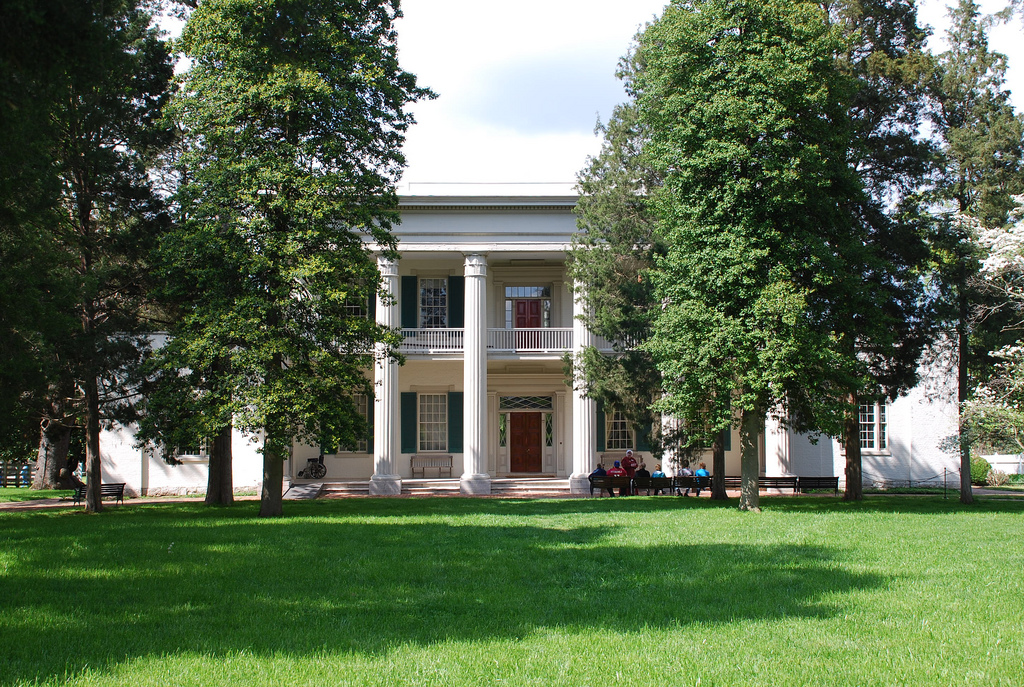 The Hermitage – home of President Andrew Jackson
The Hermitage – home of President Andrew Jackson
When Weatherford returned to Alabama, he established himself as a planter. His relatives had saved much of his property for him and by wise management, he recovered his fortunes and became again a man of considerable wealth.
Always on the side of law and order
“Red Eagle had been overcome in war, and was disposed to maintain the peace, in accordance with his promise; but his spirit was not broken, and none of his courage had gone out of him.”3
His influence was always on the side of law and order. On one occasion a very brutal assassination was committed at a public sale by two ruffians of the most desperate border type. A magistrate summoned the people as a posse comitatus to arrest the offenders, but they so violently swore that they would kill anyone who should approach them. No man dared attempt the duty. Red Eagle, who was present, expressed his indignation at the murder, and his contempt for the fears of the bystanders, and volunteered to make the arrest if ordered by the magistrate to do so.
The magistrate gave the order, and drawing a long, silver-handled knife, which was his only weapon, Weatherford advanced upon the murderers, who warned him off, swearing that they would kill him if he should advance. Without a sign of hesitation, and with a calm look of resolution in his countenance which appalled even his desperate antagonists, he stepped quickly up to one of them and seized him by the throat, calling to the bystanders to ”tie the rascal.” Then going up to the other he arrested him, the desperado saying as he approached: “I will not resist you, Billy Weatherford.”
Lived in peace and friendship
Weatherford’s plantation was among the white settlements, and the country round about him rapidly filled up with white people, among whom the warrior lived in peace and friendship. Mr. Meek writes of him at this time in these words:
“The character of the man seemed to have been changed by the war. He was no longer cruel, vindictive, idle, intemperate, or fond of display: but surrounded by his family he preserved a dignified and retiring demeanor; was industrious, sober, and economical; and was a kind and indulgent master to his servants, of whom he had many. A gentleman who had favorable opportunities of judging says of him that ‘ in his intercourse with the whites his bearing was marked by nobleness of purpose, and his conduct was always honorable. No man was more fastidious in complying with his engagements. His word was by him held to be more sacred than the most binding legal obligation. Art and dissimulation formed no part of his character. Ever frank and guileless, no one had the more entire confidence of those among whom he lived. 4
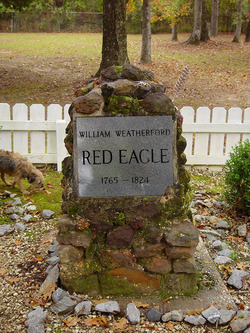 William Weatherford’s gravesite in Baldwin County, Alabama (findagrave.com)
William Weatherford’s gravesite in Baldwin County, Alabama (findagrave.com)
Another gentleman who knew Weatherford intimately for a number of years informs me that ‘ he possessed remarkable intellectual powers; that his perceptions were quick almost to intuition, his memory tenacious, his imagination vivid, his judgment strong and accurate, and his language copious, fluent, and expressive. In short,’ he says, ‘ Weatherford possessed naturally one of the finest minds our country has produced.’ These traits of character exhibited for a number of years won for their possessor the esteem and respect of those who knew him, notwithstanding the circumstances of his earlier life. Indeed those circumstances threw around the man a romance of character which made him the more attractive. After the bitterness which the war engendered had subsided his narratives were listened to with interest and curiosity.’ Though unwilling generally to speak of his adventures, he would, when his confidence was obtained, describe them with a graphic particularity and coloring which gave an insight into conditions of life and phases of character of which we can now only see the outside. He always extenuated his conduct at Fort Mims and during the war under the plea that the first transgressions were committed by the white people, and that he was fighting for the liberties of his nation. He also asserted that he was reluctantly forced into the war.”5
Red Eagle died on the 9th of March, 1824, from over-fatigue in a bear-hunt. He left a large family of children.
1Eggleston, George Cary, Red Eagle and the Wars with the Creek Indians of Alabama, Dodd, Mead & Co., 1878
2Eggleston, George Cary, Red Eagle and the Wars with the Creek Indians of Alabama, Dodd, Mead & Co., 1878 and according to Dr. Marion Elisha Tarvin, William’s half brother, David Tate (Tarvin’s grandfather) was the only man in AL who knew where Weatherford was during his stay at the Hermitage. rootsweb ancestry.com
3Eggleston, George Cary, Red Eagle and the Wars with the Creek Indians of Alabama, Dodd, Mead & Co., 1878
4Eggleston, George Cary, Red Eagle and the Wars with the Creek Indians of Alabama, Dodd, Mead & Co., 1878
5Eggleston, George Cary, Red Eagle and the Wars with the Creek Indians of Alabama, Dodd, Mead & Co., 1878
This story and more about the Creek Indian War can be found in ALABAMA PIONEERS Confrontation
Other stories include:
- Tecumseh Causes Earthquake
- Terrified Settlers Abandon Farms
- Survivor Stories From Fort Mims Massacre
- Hillabee Massacre
- Threat of Starvation Men Turn To Mutiny
- Red Eagle After The War


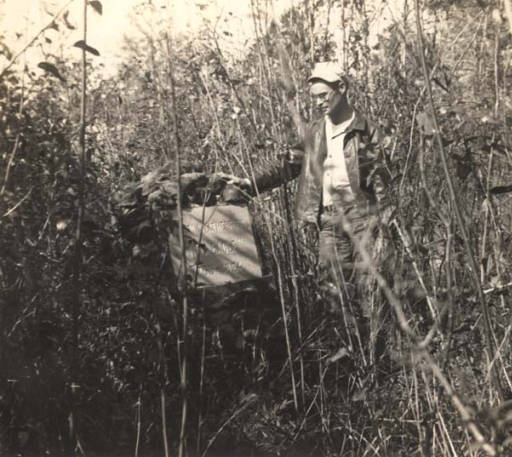
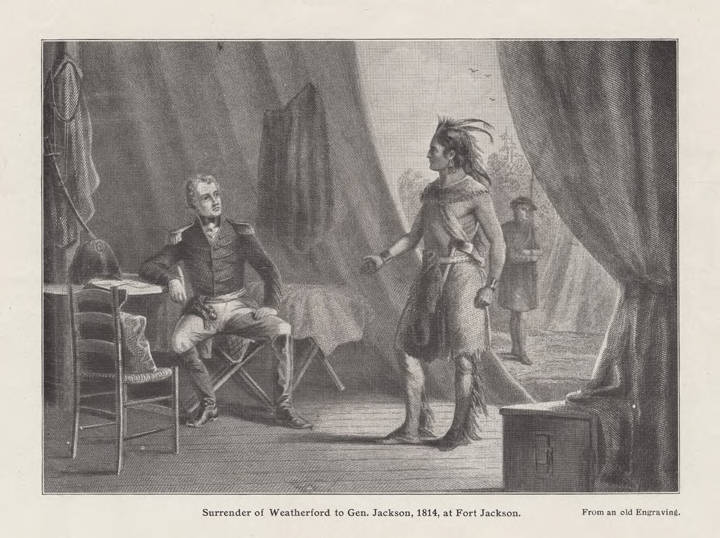
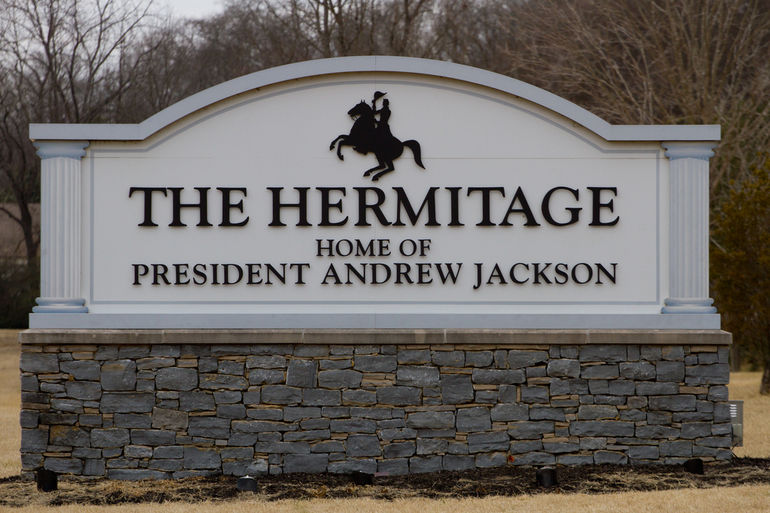
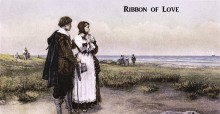


Thanks for sharing.
Interesting
Chuck Harrison Becky Thigpen-Harrison
That is so cool!
Andrew Jackson was an Indian hatter things he did to native Americans are unforgivable
I have been to this grave site. It is on the bank of the Alabama River south of Monroeville.
His mother is buried by him.
His Mother is Princess Sehoy of the influential Wind Clan. Princess Sehoy Chapter DAR in Birmingham is named in her honor. There were three generations of Princess Sehoys and they were among the most powerful wonen in many eras of Alabama history.
Is he the one that LEDs the war against Fort Mims
My family and I have been to this site many years ago, the trees around it has moss hanging out of it and the big stones outline the graves it is a very calming place. If you get the chance to visit. We own a newspaper and have done sereval stories on the Creek Indian War. From Burnt Corn to P. Cola. They hold a festival every year at the site of Fort Mims it’s a wonderful story set on the banks of the Alabama River.
You may also be lucky enough to find one of our newspapers The Monthly View at one of the places with the story in it. Check out the Chamber of Commerce in that area…
I sure like the story but there is some doubt as to its historical accuracy…The main story of this was written by my great grandfather, James Denney Driesbach years after the event in question.
Cousin’ Jamie as he was called either in person or not and Mrs. Christine were related to my family-Scott’s and Englishes through the Driesbach’s. I knew Mrs. Christine when I was young but only new Cuddin’ Jamey through family recollections at gatherings and funerals.
Andrew Jackson was a piece of crap
Thank you for this and your work in genealogy. I had always heard stories about Red Eagle while growing up, but I never knew how many were true, or if they were victim to exaggeration, but I definitely learned some new things! I appreciate the time you spent researching and writing this article. I hope you write more about Red Eagle and the Creek Nation. If you have a book available with more insight and stories about William Red Eagle Weatherford, or if you’re interested in writing one, please let me know.
Thanks Will! I bet you have a lot of stories too.
Ray Parker.
Kayli Joi Carroll
Wind Clan for life!! Lol
Stacey Mohr Brown
Interesting
Jackson killed a lot of people!
Interesting read!
Weatherford was not known as Red Eagle in his time. That comes from a dime novel written well after the fact. He was known among the Creeks as Truth Maker or Yellow Billy.
Stephanie Burton my great-great-great-great-great-grandfather
Tony House
Look up William Weatherford and the American State Papers and Nancy Fisher
Jerry Ellis
sold the indian lands
I’ve visited his grave countless times
Wasn’t McGillary another Creek leader during this time period in Alabama?
Alexander McGillivray
Debra Elisse Henderson he died in 1893 before the Indian wars as we know them.
Ironic that Red Eagle was protected by the worst enemy native Americans had. Jackson was responsible of the Trail of Tears that decimated Cherokee, Yuchi, Creek and other tribes.
Tim Parker Karen Karen Parker Wilkenshoff Jeff Caldwell Betty Sizemore Bastine Bernice Hust
Vickie Bawcum Collins
Jennifer Collins Smith wonderful story
Thanks, Ron.
He is my great great great grandfather
Candy this is so awesome cousin. Next time I’m back I wish to visit this. Our heritage.
Sue Jackson
Red Eagle was not protected by Jackson.Today we call it ambushed.
My great great grandfather, direct descendant, we not only found his grave many years ago but also replaced the headstone when it was stolen.
Dale W. Jackson
Here is a lesson history teaches about adversaries getting along right after they killed each other’s people. And brutally on both sides. And the Indian who attacked ft mims gets a monument. Wow! Go figure!
Been there many times
Maybe historians should look up Jackson’s account of events that transpired during this time period.
Also FYI in 1814 Baldwin County wasn’t where it is located today. Small matter but worthy of noting.
andrew jackson is a piece of shit.
In defense of the Red Sticks, I bet they didn’t get the memo of the white folks moving on their property.
My grandfather once had a store along the road going to the graves. It’s been long gone but my father had tales about locals being spooked about getting too close.
One of our family ancestors. I am very proud of my heritage.
Been there all he wanted was to be hurried next to his mother.
William Weatherford was an ancestor.
Russell Jackson same here.
Great warrior leader of the Creek nation.
Tear it down. /s
John and I have visited the graves. With respect but LOL the Creeks did not rise but the mosquitoes certainly did!
David Stevens – noticed the Weatherford name listed in the history article.
I just won a prize from Facebook.
Adios, Alabama Pioneers
That’s also where the phrase comes from I’ll be there I’ll see if the creek don’t rise it wasn’t talking about water it was talking about the Creek Indians